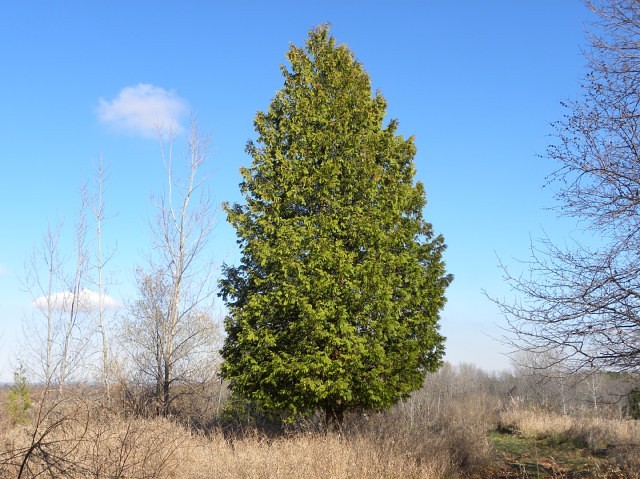The Best Oak Trees to Grow in Alabama
There are over 90 different oak trees that are native to Alabama and even more varieties of oak that can be grown there. More varieties of oak are grown in Alabama than in any other state in the United States. Dig into the extensive catalog of oak trees that were born and bred for the cotton State! Read along to discover some of our favorite oaks and learn how easy it is to incorporate them into your landscapes and gardens.
Darlington Oak (Quercus hemisphaerica)
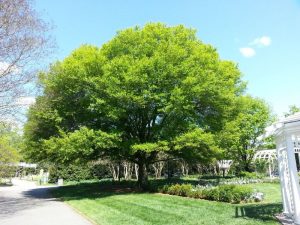
Darlington oak, aka laurel oak, is a deciduous tree that’s native to the southeastern United States. These impressive specimens can grow to be 60 feet tall and can live to be up to 50 years old. Darlington oaks produce biennial acorns and an abundance of long, narrow leaves. They’re beloved by pollinators, birds, squirrels, and shade-loving humans.
Some gardeners steer clear of this oak variety, as it is highly susceptible to rot and disease and does not live as long as other oak varieties. However, it does wonderfully as a specimen or shade tree. Its fruits and canopy are essential to all sorts of native wildlife.
White Oak (Quercus alba)
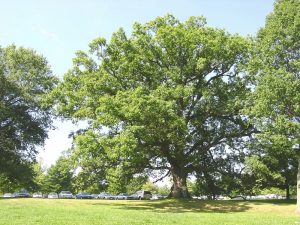
White oak is one of the most exquisite hardwood varieties of oak found in the Southeast. This towering tree can live to be 450 years old! Its light gray bark is noticeably textured. At full maturity, it should have a lush canopy of leaves. A healthy white oak will produce a large crop of acorns every four to six years.
Mature white oaks can grow to be 150 feet tall. They’re integral oxygen producers and quintessential to the survival of several types of insects, birds, and animals. These impressive trees do well in a variety of conditions. They can tolerate everything from sandy to swampy soil. They’ve even been known to take group roots on slopes and ridges.
Swamp Post Oak (Quercus similis)
Swamp post oak is native to the bottomland hardwood forests of the eastern United States. These tall, pointed trees can grow up to 82 feet tall. They have rough grey bark and fuzzy brown branches. They produce large crops of reddish-brown acorns every two years or so.
Delta Post Oak (Quercus stellata Wangenh)

Delta post oak, or bottomland post oak, is a drought-tolerant tree that prefers sandy, loamy, and alkaline soils. The tree produces an abundance of two- to three-lobed green leaves and reddish-brown acorns. The nuts serve as food for whitetail deer, wild turkeys, and squirrels.
Delta post oaks do not typically exceed 50 feet in height. Their trunks usually measure between 12 and 24 inches in diameter.
Sand Live Oak (Quercus geminata)
Sand live oak is native to the coastal regions of the southeastern United States. It grows wild from the southern tip of Florida to northeastern Virginia. It thrives in sandy, scrubby conditions and can even be found growing in dunes.
The sand oak has unusually long, thin leaves that grow in clusters at the ends of its branches. The ends of leaves typically curved inward.
Turkey Oak (Quercus laevis)
Turkey oak, aka Catesby oak or scrub oak, is a close relative of the more widely reckognized red oak. This tree variety is native to the southeastern United States and can be found growing in the wild in the areas between central Florida and Delaware. It also grows naturally in the southern half of Alabama and can be found at most nurseries in the area.
The turkey oak’s leaves boast long, thin lobes and pointed tips that, according to some, resemble turkey feet. This tree can grow to be 30 feet tall. Its wood is considered a valuable fuel.
Water Oak (Quercus nigra)
Water oak is another fast-growing specimen that does well in Alabama’s climate. It has teardrop-shaped blue-green leaves that turn yellow in autumn. The tree also produces acorns with distinctly hairy caps.
Water oak is an excellent variety for spaces with both compact and loose soil. As its name indicates, it thrives in moist conditions.
Southern Live Oak
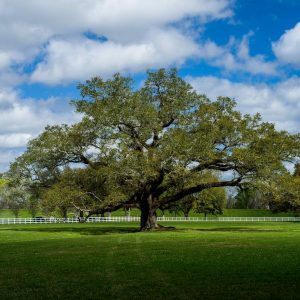
Southern live oak is a quasi-evergreen tree that is native to the southeastern United States. The southern live oak can produce crowns that are 150 feet in diameter and 80 feet tall. The tree’s impressive branches tend to stem from a singular trunk. A fully matured southern live oak trunk can be anywhere from 5 to 6 feet in diameter.
Southern live oaks are stunning specimens. Their fruitful acorn harvests attract all sorts of wildlife. Their sweeping branches are often utilized by nesting birds and squirrels.
While southern live oaks grow freely in the wild, they’re also propagated in gardens and landscapes throughout the southeast. They prefer salty soil, indirect sunlight, and warm conditions.
Swamp Chestnut Oak (Quercus michauxii)
Swamp chestnut oak is a fast-growing tree that’s native to the Atlantic Coastal Plain. It produces oval-shaped leaves with several small lobes. It grows quickly in humid, temperate climates. It produces its first acorns around the age of 20.
Swamp chestnut oaks should be planted in places that receive plenty of sun and water.
Bluejack Oak (Quercus incana)
Bluejack oak is a shrub-like tree with blue-green leaves. Its trunk can grow up to 20 feet tall. Meanwhile, its crown can spread to be 56 feet wide. It forms acorns biannually. This impressive species is native to the coastal regions of North Carolina. It does well in Alabama’s growing conditions.
Bluejack prefers well-draining soil and shade. It does well when it is accompanied by longleaf pine, turkey oak, and other relatively low-lying tree species.
Shumard Oak (Quercus shumardii)
Shumard oak, or spotted oak, is a member of the red oak family. These charming trees can grow to be 80 to 100 feet tall. Meanwhile, their crowns typically measure between 40 and 60 feet wide.
Northern Red Oak (Quercus rubra)
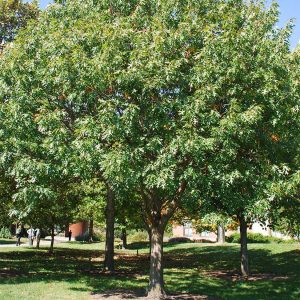
Northern red oak is native to the southeastern United States. It can be found growing as south as Alabama and Louisiana. It’s commonly used in parks and gardens. It grows quickly and can tolerate a wide variety of conditions.
The northern red oak produces nine-lobed leaves. It takes the tree two whole years to develop a single crop of acorns.
Blackjack Oak (Quercus Marilandica)
Blackjack oak is a medium-sized tree with bell-shaped leaves, yellow-brown acorns, and cracked black and orange bark. The tree’s branches typically die off at the base.
This species is native to the eastern and central United States. It’s a habitat and food source for everything from birds to lichens.
Southern Red Oak (Quercus falcata)

Southern red oak is a medium-sized tree with a straight trunk and a large crown. It has smooth gray bark, three-lobed green leaves, and reddish brown acorns. The leaves typically turn brown and fall off the tree in autumn.
Post Oak (Quercus stellata)
Post oak is a tree that grows well in rocky or gravely areas and moist flood plains. These trees have impressive crowns lined with distinctively lobed leaves. The foliage is shiny and green. Its bark is dark gray with vertical ridges. The tree’s wood is often used as lumber.
Black Oak (Quercus velutina)
Black oak, or eastern black oak, can grow to be 80 feet tall with a trunk that’s 25 inches in diameter. These trees produce shiny green leaves with pale brown undersides. They have noticeably large acorns and large, spindly branches. Black oak is a common choice for an Alabama-based shade tree. These impressive specimens look nice along the edges of streets and yards.
Scarlet Oak (Quercus coccinea)
Scarlet oak, a species sometimes referred to as Spanish oak or red oak, is a fast-growing tree that’s found in several states throughout the Eastern United States. It can grow to be anywhere from 60 to 80 feet in height and have conical canopies that are anywhere from 40 to 50 feet in diameter. These lovely trees prefer sunny conditions and good drainage. When planted in the right conditions, scarlet oaks grow very fast. Most trees increase by 13 to 24 inches in a single year.
Willow Oak (Quercus phellos)

Willow oak is a fast-growing tree that can live to be well over 100 years old. These trees are often planted along streets and sidewalks throughout the southern United States. Their shade-giving canopies are a welcome site in Alabama and elsewhere.
Willow oaks typically grow to be 100 feet tall. They have pale green leaves that turn yellow in fall. Like most other oak trees, they produce an abundance of flowers. These trees typically start making acorns when they turn 20 years old.
Quercus phellos is commonly used in landscaping and gardening. It’s easy to propagate and does well in Alabama’s temperate climate.
Texas Oak
Texas oak is a massive delicious tree that’s capable of thriving in moist conditions. This tall, slender perennial grows straight up. It is capable of producing an expansive canopy. Its lobed green leaves turn red and yellow in the fall. The tree also produces an abundance of acorns around this time.
Tips on Growing Oak Trees in Alabama
Oaks are relatively low-maintenance trees. Several varieties are native to Alabama. Most kinds of oak can tolerate a broad assortment of soils, minimal pollination, and varying temperatures.
Propagating Acorns
Most oak varieties can be propagated from acorns or cuttings taken from mature parent trees. Acorns should be stratified before planting. Stratification is the act of placing seeds inside a mixture of moist sand and peat moss. Stratification typically takes over a month. Stratified acorns should be planted in the spring. Meanwhile, raw acorns can be planted in the fall. Propagate your acorns in a protected section of your yard. Young saplings can be transplanted around age one or two, or right before they develop tap roots.
Planting Cuttings
Cuttings should be taken from mature plants during late summer or early fall. Place your cuttings in well-draining pots filled with potting soil and a bit of perlite or landscaping gravel. Many gardeners apply root growth hormone treatment to the bottom of their cuttings. This is not necessary, though it can be helpful!
It typically takes several months for cuttings to develop roots. Once you’re confident that your plant has sprouted roots, you can transplant it into a larger container or an open space in your yard.
Prunning
Live oaks, or evergreen oaks, should be pruned during the summer or early fall. Meanwhile, deciduous oaks should be pruned during the winter. Do not over-prune your oaks, as such behavior can leave them susceptible to diseases and pests. Only remove branches that are dead, dying, or problematic.
Thriving
Young oaks should be watered once a week when rainwater is not available. Offer your young oak fertilizer in spring. Fertilizer with a 12-4-8 ratio (12% nitrogen, 4% phosphorus, 8% potassium) is ideal. It will help your oak to thrive. Fertilized oaks are also more likely to produce an abundance of acorns.
The roots of mature oak trees can grow 3 to 5 feet deep and 75 to 250 feet wide! As such, these incredible trees receive most of their nutrients and water from the ground located just below the earth’s surface. Oaks are common elements in Alabama landscapes. While many specimen trees are purchased from nurseries, there are plenty of oaks that are propagated from acorns and cuttings. Take care when choosing a species for your yard. Each oak variety thrives in a concise environment and specific conditions.


